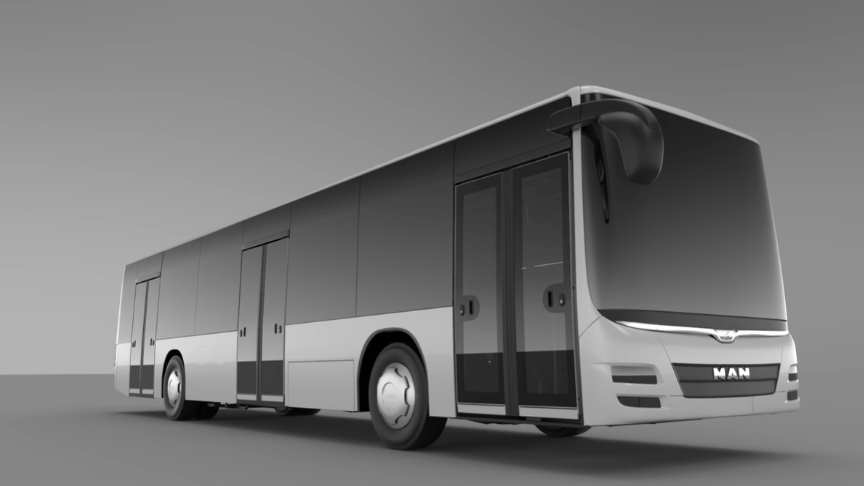The Role of Busdoor Systems in Public Transportation
Due to global coronavirus lockdowns, bus door systems manufacturers are experiencing production delays. However, a few factors are fueling growth in this market.
In addition to boarding and alighting times, the dataset included passengers standing in the door areas at each stop. A clean version of the data is available, and higher load factors are associated with fewer passengers hanging out the doors (see Figure 5). Bus designs also influence crowding.
 Safety
Safety
In terms of safety, the autonomous bus door system helps to provide a safe and comfortable travel experience for passengers. The system can detect passenger movement and prevent them from hanging out the door, thereby ensuring that no one is left unattended or exposed to the elements. In addition, it ensures that passengers do not have to physically contact the doors while boarding or deboarding, which can help to maintain hygiene and prevent infections from spreading.
In order to improve the operating efficiency of buses, it is necessary to reduce marginal dwell times caused by crowding. To this end, the authors examined how different bus design factors—including aisle length, service type, and whether or not the bus has a front seating area—influence where riders decide to stand. They found that, even at low levels of crowding, riders tend to crowd near the doors. This door crowding has a greater impact on operational performance and safety measures than aisle crowding, because it directly affects the number of riders attempting to board or alight.
Convenience
As passenger volume increases, the need for improved safety and convenience grows.
Busdoor 
systems help to mitigate these problems, as they allow passengers to enter and exit safely while providing a comfortable ride. Moreover, their advanced designs enable buses to reduce fuel consumption and emissions.
The door crowding effect on marginal boarding and alighting times has been studied for a variety of different bus types and service types. These studies show that the impact of door crowding is nonlinear and can result in a significantly higher marginal dwell time than uncrowded buses. Moreover, they suggest that the number of passengers hanging out the doors is related to the load factor and the number of seats available in the front area.
The global autonomous bus door system market is segmented based on level of automation, mechanism, propulsion type, and region. The electric door system technology is expected to dominate the global market, followed by pneumatic door systems.
Environmental Impact
As a mode of transportation, buses contribute significantly to air pollution. Commuters’ PM exposure concentrations are significantly higher when they ride buses than when they take subways. Several factors influence this difference, including seat location and vehicle type, ventilation mode, route characteristics, and the use of screen doors.
The global bus door system market report presents a detailed analysis of the key trends that are driving the market and offers insights into the market dynamics. The research report segments the market based on bus type, level of automation, mechanism and propulsion type and offers forecasts from 2023 to 2028.
The major players in the bus door systems market include Bode Sud S.p.A, Continental AG, Daimler AG, Ferro Doors A/S, Circle Bus Door Systems Co. Ltd, KBT
GmbH, Masats LLC, PSV Transport Systems Ltd.,
ShavoNorgren (India) Pvt. Ltd, Schaltbau Holding AG, Transport Door Solutions Ltd and Ventura Systems CV. The growth of the market is driven by technological advancements and increasing investments in smart city projects.
Maintenance
The use of busdoor systems allows passengers to board and exit the vehicle without touching the door, which helps maintain hygiene and prevents injuries. They also ensure that the doors remain closed during transit, reducing heating-cooling costs and preventing air from entering the passenger compartment.
In addition, the system reduces maintenance costs by removing the need to repeatedly actuate the park brake during passenger pickup. This helps avoid overworking the actuation lever and premature wear of its components.
The global market for autonomous bus door systems is segmented by bus type, door type, mechanism, level of automation, propulsion type, component, and region. By mechanism, the market is bifurcated into pneumatic and electric. The electric segment dominated the market in 2019, accounting for more than three-fifths of its share and is projected to grow at the highest CAGR during the forecast period. Electric bus doors have applications on shuttle buses, coaches, and city buses. They are able to automatically open and close, and they also help prevent clipping (doors getting blocked due to objects or passengers). The doors can be manually opened when necessary.
--
 Abdul Alim - 2023-08-31
Abdul Alim - 2023-08-31
Comments
 Safety
In terms of safety, the autonomous bus door system helps to provide a safe and comfortable travel experience for passengers. The system can detect passenger movement and prevent them from hanging out the door, thereby ensuring that no one is left unattended or exposed to the elements. In addition, it ensures that passengers do not have to physically contact the doors while boarding or deboarding, which can help to maintain hygiene and prevent infections from spreading.
In order to improve the operating efficiency of buses, it is necessary to reduce marginal dwell times caused by crowding. To this end, the authors examined how different bus design factors—including aisle length, service type, and whether or not the bus has a front seating area—influence where riders decide to stand. They found that, even at low levels of crowding, riders tend to crowd near the doors. This door crowding has a greater impact on operational performance and safety measures than aisle crowding, because it directly affects the number of riders attempting to board or alight.
Convenience
As passenger volume increases, the need for improved safety and convenience grows. Busdoor
Safety
In terms of safety, the autonomous bus door system helps to provide a safe and comfortable travel experience for passengers. The system can detect passenger movement and prevent them from hanging out the door, thereby ensuring that no one is left unattended or exposed to the elements. In addition, it ensures that passengers do not have to physically contact the doors while boarding or deboarding, which can help to maintain hygiene and prevent infections from spreading.
In order to improve the operating efficiency of buses, it is necessary to reduce marginal dwell times caused by crowding. To this end, the authors examined how different bus design factors—including aisle length, service type, and whether or not the bus has a front seating area—influence where riders decide to stand. They found that, even at low levels of crowding, riders tend to crowd near the doors. This door crowding has a greater impact on operational performance and safety measures than aisle crowding, because it directly affects the number of riders attempting to board or alight.
Convenience
As passenger volume increases, the need for improved safety and convenience grows. Busdoor 
